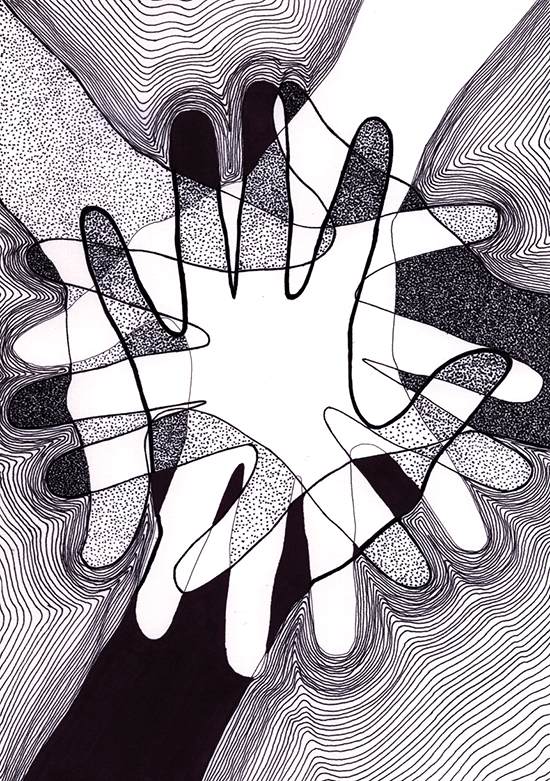I think the Buddha knew a thing or two about human nature. In particular I think he was wary of the mischief that can come from uneven relationships, in which one person has considerably more power than another, such as in the relationship between a teacher and student. One of the more significant things he did before passing away was appoint no successor, saying “What I have taught and explained to you as the teaching (dhamma) and the practice (vinaya) will, at my passing, be your teacher” (Digha Nikaya 16.6).
This is only one version of the story, of course, and many Buddhist traditions are built around the existence of just such a relationship at the heart of the teaching and practice. Maybe that has not been a problem for many centuries, but there certainly have been a lot of cases in the modern world where the student-teacher relationship has involved a great deal of harm and abuse. Even if these are just a few (or a few barrels of) bad apples, we can’t help but appreciate the prudence of the system Gotama himself left in place when he departed.
The Buddha is everyone’s primary teacher, having worked things out for himself and having had the compassion to teach others, even though the task is wearisome and few are really willing to swim against the stream. But the historical Buddha was a conditioned being, and when his presence was at last fully extinguished between two sal trees in Kusinara, he referred us all to the teachings he left behind.
These were extensive, detailed, well organized, and accessible. He had spent 45 years expounding and reiterating a consistent curriculum, which countless people had memorized and continued to rehearse together every fortnight. It was like leaving everyone with an operating manual, entrusting them to look up what was needed and troubleshoot as necessary. This does not mean relying only on “book learning,” though a detailed study of the original texts remains our most direct way of accessing the early teachings. Since human contact remains an important vehicle for transmitting and interpreting the teachings, the role of teacher was also invested in the third of the three gems, the fourfold sangha of monks, nuns, laymen, and laywomen.
Our teachers are a vast community of kalyanamittas, or “beneficial friends,” some of whom wear robes while others dress conventionally. Everyone you meet who has a sincere interest in Buddhist teachings and practices can be your teacher, and you are a teacher of others, whether you choose to be or not. In the plan that the Buddha left behind for his movement, everyone is on the path together. Some are a few steps ahead, some are a few steps behind. Each person has an opportunity to learn from those who are farther along, and also has a responsibility to teach those who are less knowledgeable or less experienced. All members of the community are learning from each other, and all are teaching one another.
There are some people from whom we gain deep knowledge and tremendous inspiration because of the way they embody and exemplify the teachings. From others we learn what not to do and how not to be. In a discourse known as “Inference” (Majjhima Nikaya 15), the Buddha specifically points out how to learn from the unhealthy actions of others. If someone does something harmful, for example, and you know it causes you distress, then you can undertake a commitment to not behave in the same way yourself, so as not to cause distress to others. The discourse goes on to suggest a careful follow-through whereby one honestly assesses one’s own behavior—to ensure that one is living up to the commitment—and takes corrective action if necessary. There is something to be learned from everybody, in other words, and everyone is setting an example, for better or worse, to others.
The problems all seem to begin when one idealizes a teacher, or when teachers idealize themselves. This is a psychological limitation involving the splitting of the sense of self into too-positive and too-negative constructs. It sets the stage for students to devalue themselves while overvaluing the teacher, and for teachers who are exposed to this to drift toward narcissism: a danger that lurks in any relationship, but one that seems to be particularly damaging in recent Buddhist teacher-student situations. Given these psychological dangers, even if they are only weaknesses of a modern population, one has to be concerned about the hierarchical structures inherited from Confucianism in the Chan/Son/Zen tradition and from feudalism in Tantra.
Although the Buddha himself could not help but play the role of an idealized teacher, he seems to have taken great care to bequeath us a system designed to mitigate the potentially harmful effects inherent in hierarchy while providing direct access to his teachings. We might want to take him up on the offer.
Thank you for subscribing to Tricycle! As a nonprofit, we depend on readers like you to keep Buddhist teachings and practices widely available.
